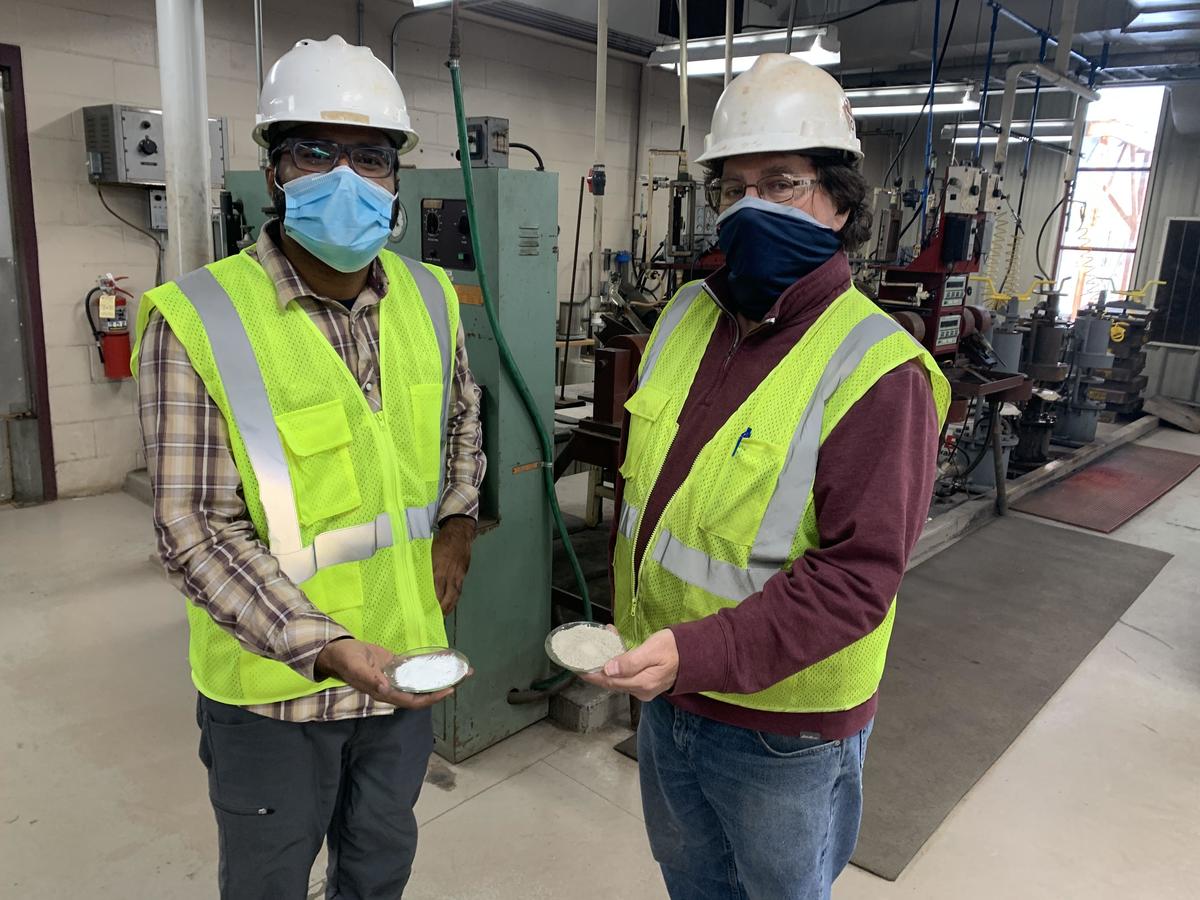As the steel industry continues its transition away from blast furnaces to electric arc furnaces -- now 70 percent of steel production -- Minnesota’s Iron Range must continue to expand its offerings to include higher value iron products. Today, Minnesota has one producer of direct reduced grade pellets to address the electric arc market.
When pellets are manufactured, iron concentrate is mixed with binder materials which hold the product together for shipping and introduction into the next steel manufacturing step. Direct reduced grade pellets (further processed into direct reduced iron) differ from traditional taconite pellets in having higher iron content and reduced impurities, like silica and alumina. Bentonite clay is an effective binder for taconite blast furnace pellets, but is composed of those same impurities. Alternative binders are needed.
Binders of the future
NRRI has carved out a unique niche with its bench-to-pilot scale testing capabilities to evaluate how alternative binders perform for Minnesota’s specific iron ore concentrates. The testing data will help Minnesota’s iron industry select the best binders for their ore bodies and end products.
“We are helping industry evaluate naturally derived and synthetic chemicals as a substitute for traditional bentonite,” explained Shashi Rao, NRRI metallurgical engineer. “We can test the alternative binders for companies that don’t have internal capabilities to test at the lab and pilot scale.”
Binders 101
Bentonite clay is largely mined domestically in Wyoming, South Dakota and Montana. Its unique properties hold the fine iron ore particles together during taconite high-temperature processing, hardening the pellets for shipping. However, aside from introducing silica and alumina incompatible with electric arc furnaces, use of bentonite faces escalating transportation costs and depleting U.S. reserves.
“The low-grade iron deposits are significantly more challenging to process, which can be seen by increasing levels of unwanted elements such as silica, alumina, alkali and phosphorus in the iron ore concentrate,” explained Rao.
Demand for direct reduced iron is escalating and a suitable binder is key for making quality pellets without increasing costs. Alternative binders being tested are often derived from organic compounds or agricultural or bio-based products that do not contain mineral impurities.
Iron pellet products -- whether direct reduced grade or traditional -- need to be very hard to withstand shipment by rail and cargo ship to the steel mills.
Poor quality pellets will turn to wasteful dust during shipment and downstream processing. Rao and the research team test the binders’ ability to facilitate the balling of the fine iron ore particles and document its improved mechanical properties and the metallurgical performance of fired pellets.
NRRI Expertise
Rao has studied metallurgical engineering in India and Australia, and has been NRRI’s lead researcher in alternative binders for nearly seven years.
“As demand for direct-reduced-grade pellets increases for electric arc furnace steelmaking, the demand for alternative binders will increase,” said Rao. “This transition is happening in Minnesota. Blast furnace grade pellets can be produced with or without alternate binders.”
